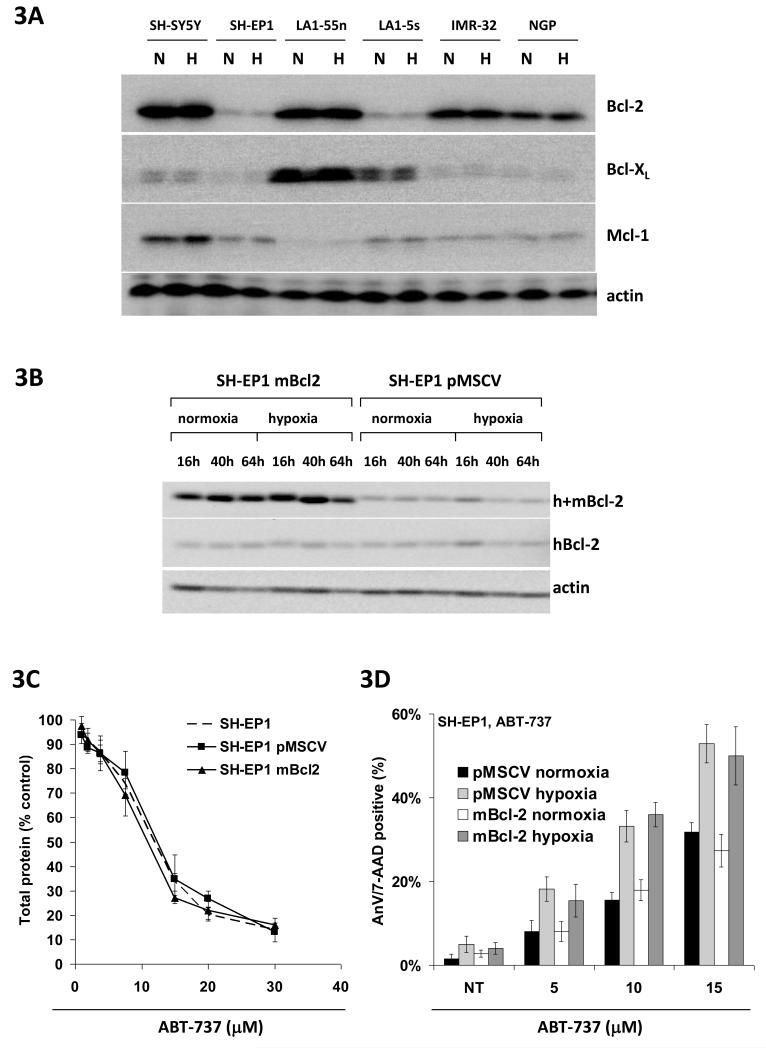Figure 3.
Differential expression of Bcl-2 family proteins does not account for differences in sensitivity to ABT-737 in neuroblastoma cell lines. A. Western blot showing variation in expression of the ABT-737 targets Bcl-2 and Bcl-xL, and the recognised resistance marker Mcl-1 across the 6 neuroblastoma cell lines. Note the lack of change in protein level between normoxia (N) and after 48 hrs in hypoxia (H). Actin is shown as a loading control. Blots are representative of 3 independent experiments. B. Expression of mouse Bcl-2 protein in stably transfected SH-EP1mBcl-2 cells in comparison with vector only controls (SH-EP1pMSCV). No difference in human Bcl-2 levels are seen with an antibody that recognises only human Bcl-2 (hBcl-2), but higher expression of Bcl-2 is seen in SH-EP1mBcl2 cells with an antibody that recognises both human and mouse Bcl-2 (h+mBcl-2). No changes in levels of either human or mouse Bcl-2 were seen over a 64 hour exposure to hypoxia. Actin is shown as a loading control. Blots are representative of 3 independent experiments. C. Increased expression of Bcl-2 does not sensitise SH-EP1 cells to ABT-737. The response of wild type SH-EP1 cells, vector-only controls (SH-EP1pMSCV) and SH-EP1 cells stably over-expressing mouse Bcl-2 (SH-EP1mBcl-2) to ABT-737 in SRB assay in normoxia is identical. D. Increased expression of Bcl-2 does not sensitise SH-EP1 cells to ABT-737-induced apoptosis. No difference in % annexin V/7-AAD positive cells was seen after 24 hr exposure to ABT-737 at varying concentrations between vector-only controls (SH-EP1pMSCV) and SH-EP1 cells stably over-expressing mouse Bcl-2 (SH-EP1mBcl-2), in either normoxia or hypoxia.

